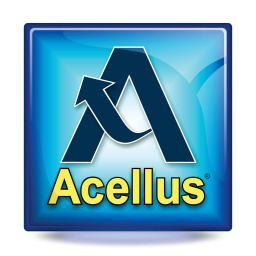British & World Literature – English IV

Course Features
Course Details
Course Overview
This British and World Literature course provides a rigorous survey of literary development, commencing with Anglo-Saxon texts such as Beowulf and Bede’s historical accounts, advancing to medieval literature including Chaucer’s The Canterbury Tales, and progressing to Renaissance works like Shakespeare’s Macbeth and his sonnets. The curriculum examines Neoclassical writings by Swift and Voltaire, Romantic poetry from Blake, Shelley, and Keats, and Victorian masterpieces such as Frankenstein and Pride and Prejudice, concluding with Modernist selections like “Araby” and wartime verse. Students will enhance their analytical and persuasive writing proficiency, refine grammatical precision, and develop practical competencies, including resume and cover letter composition, fostering both academic and professional preparedness. Course topics include:
-
- Anglo-Saxon Literature
- Medieval Literature
- Analytical Writing
- Renaissance Literature
- Shakespeare’s Macbeth
- Neoclassical Literature
- Romantic Literature
- Modernist Literature
Sample Lesson - Introduction to British & World Literature
 This course was developed by the International Academy of Science.
Learn More
This course was developed by the International Academy of Science.
Learn More
Scope and Sequence
Anglo-Saxon Literature: Part One Students will explore the early history and establishment of England, diving into the epic poem Beowulf. They will analyze the heroic values and literary style of Anglo-Saxon literature while reviewing the parts of speech to strengthen their grammar and writing skills.
Anglo-Saxon Literature: Part Two Building on their study of Anglo-Saxon literature, students will examine historical works such as Venerable Bede’s A History of the English Church and People. They will also explore poetic works from the enigmatic Exeter Book, analyzing various literary devices within these texts.
Medieval Literature Shifting focus to medieval literature, students will study the Prologue of Geoffrey Chaucer’s The Canterbury Tales. They will examine the characterization and details of the travelers, making inferences about potential developments in the story.
Analytical Writing Students will learn the components and process of crafting an analytical paragraph, preparing them to write a full literary analysis on theme, conflict, or characterization using figurative and syntactical devices. By the end, they will apply these skills to compose an analytical paragraph on The Canterbury Tales.
Medieval and Renaissance To conclude their exploration of medieval literature, students will read the Arthurian tale Sir Gawain and the Green Knight. They will then transition to the Renaissance, analyzing a selection of Shakespearean sonnets using the TPCASTT method.
Macbeth: Part One Continuing their journey through Renaissance literature, students will delve into William Shakespeare’s Macbeth. They will explore the play’s powerful details, characterization, and figurative language that enhance its dramatic impact.
Macbeth: Part Two Students will complete their study of Macbeth before turning their attention to Queen Elizabeth I’s “Speech Before Her Troops,” analyzing its rhetorical appeals and devices. They will also examine the elements of a persuasive essay and write their own persuasive piece.
Neoclassicism: Part One As students begin their exploration of Neoclassical literature, they will consider the historical context of the period. They will analyze works like Daniel Defoe’s A Journal of the Plague Year and Jonathan Swift’s Gulliver’s Travels.
Neoclassicism: Part Two Continuing with Neoclassical literature, students will read Voltaire’s Candide. They will refine their grammar and writing skills by reviewing punctuation and dialogue rules, while also focusing on paragraph structure and explanatory writing techniques.
Romanticism and the Victorian Era: Part One Students will immerse themselves in Romantic literature, reading poems by William Blake, Lord Byron, and William Wordsworth. They will identify Romantic elements and poetic devices within these works.
Romanticism and the Victorian Era: Part Two The study of Romantic literature continues as students explore works by Percy Bysshe Shelley and John Keats. They will also dive into Mary Shelley’s Frankenstein, examining its themes and characters.
Romanticism and the Victorian Era: Part Three To wrap up Romantic literature, students will analyze Jane Austen’s Pride and Prejudice and Alfred Tennyson’s “The Charge of the Light Brigade.” They will further develop their writing skills by studying the components of a well-crafted research essay.
Modernist Literature Students will investigate Modernist history and literature, exploring works such as the short story “Araby” and poems like “The Song of the Mud” and “Dulce et Decorum Est.” Additionally, they will learn to create a professional resume and draft an effective cover letter.






